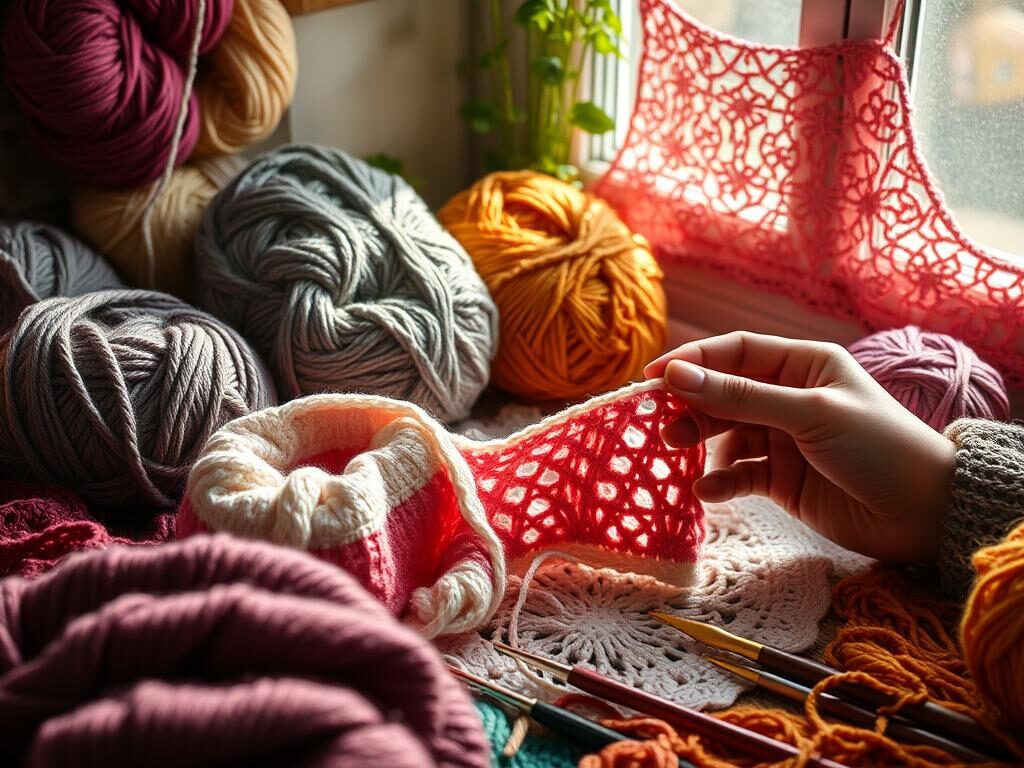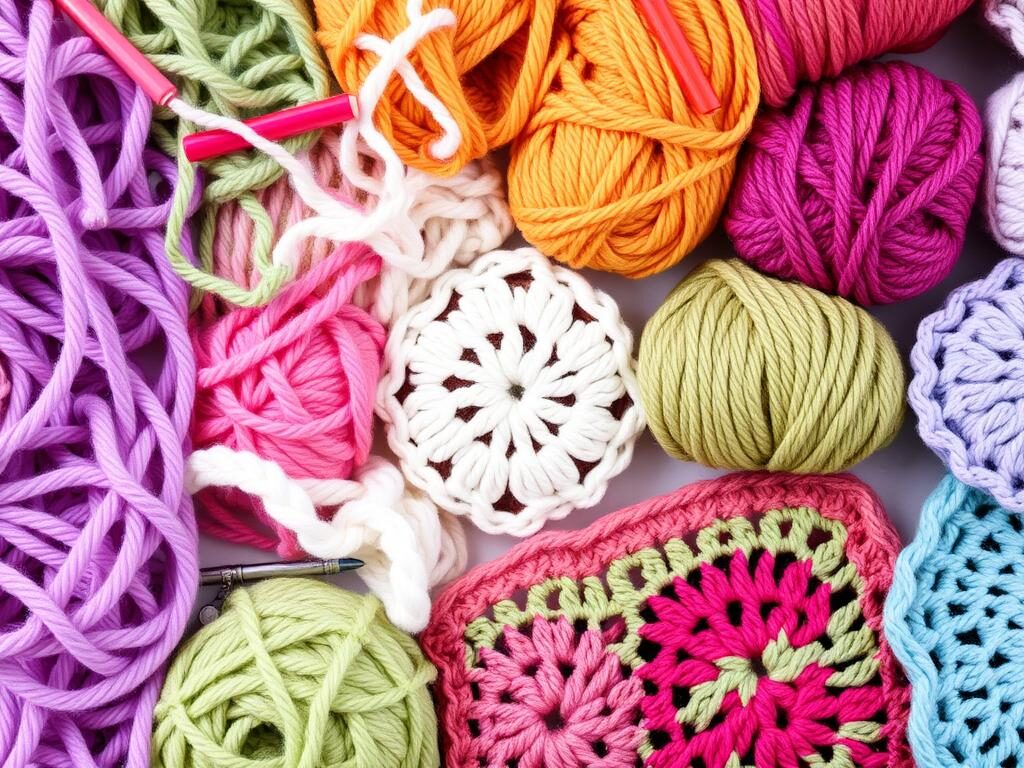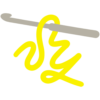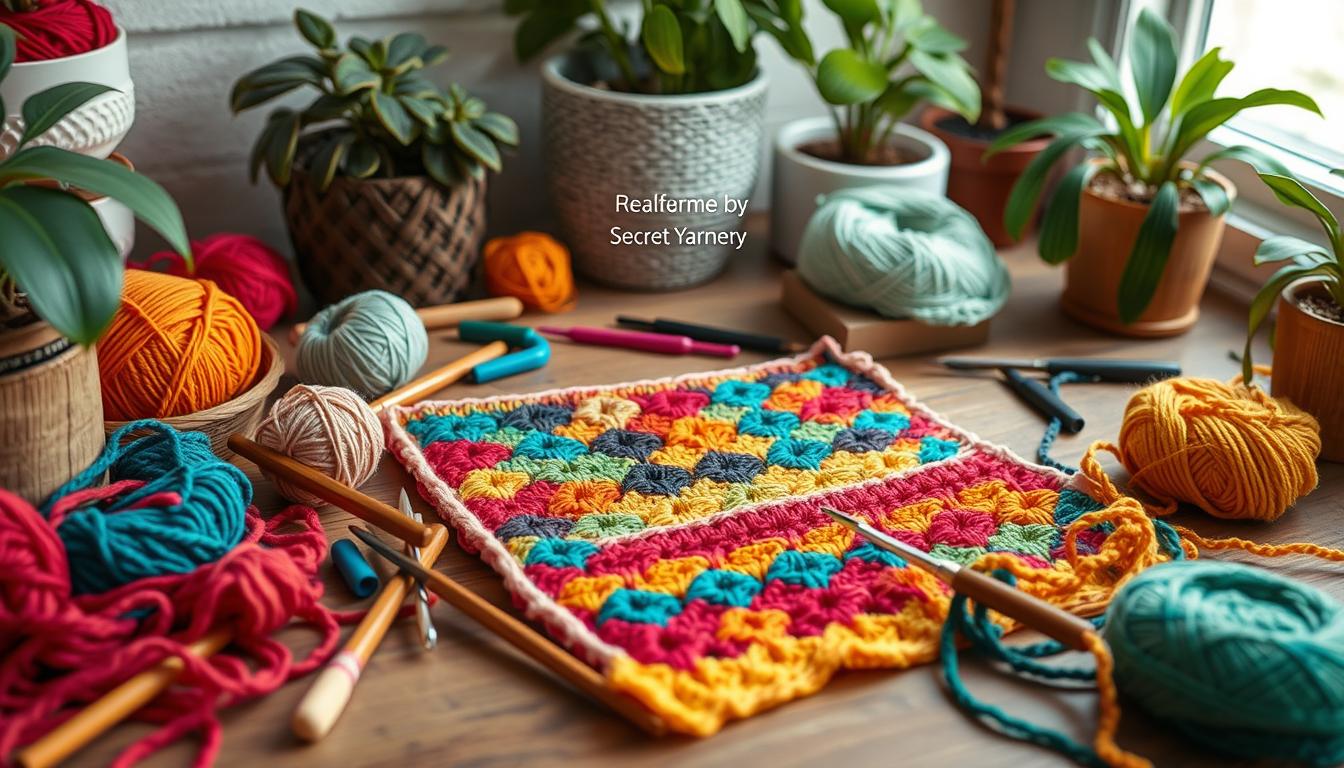Common Crochet Mistakes and How to Avoid Them
As someone who’s journeyed through the loops and knots of crochet, I’ve seen how each stitch can add to the narrative of our creations. But what happens when unintended crochet mistakes start rewriting that story? It’s a common misconception that only novices face crochet blunders. In truth, from my own oops moments to the collective experiences of many crafters, we’re all susceptible to the occasional crochet mishap, regardless of our skill level.
I’ve learned that those oops moments—whether they be accidental stitches, gauge inconsistencies, or just the wrong shade of yarn—can become treasured parts of our crochet journey, especially when we know the crochet troubleshooting steps to take. Even something as seemingly minor as choosing a slightly different hook size or yarn weight can spin your project’s story in a whole new direction, which is why knowing the nuances of crochet fixing is so crucial.
So let’s unravel these knots together. I’ll share the wisdom I’ve gathered from my time with the hook, from understanding the true importance of a gauge swatch to recognizing the pitfalls of not reading through your crochet pattern thoroughly before beginning. My aim is to guide you through the maze of common crochet repair techniques, helping you hold onto the joy of the craft without the frustration of unexpected turns.
Let’s dive into the stitches and explore how to bring precision, joy, and a sense of accomplishment to every piece we create, ensuring that the story your project tells is exactly the one you intended.
Key Takeaways
- Understanding the significance of stitch definition, and why I stand by 100% cotton yarn for 80% of my projects.
- Learning the importance of using online reviews and recommendations to choose the best yarn for quality and drape.
- Start your projects right: Why I always reach for a larger hook on that foundational chain.
- The vital habit of weaving in ends with at least 5-6 inches of yarn to ward off those fraying nightmares.
- Mastering basic crochet stitches as pivotal stepping stones for tackling most patterns.
- Embracing the learning curve—how my past flops have shaped my current expertise.
- Why patience and consistent practice are your best allies in becoming a crochet virtuoso.
Understanding Basic Stitch Techniques
Improving your crochet skills starts with mastering basic stitches. Knowing how to do stitches right can make your projects better. Many beginners face problems early on, but with practice, you can avoid these issues.
Mastering Both Loop Crocheting
One common mistake is not using both loops of a stitch. This can make your seams weak. Start with a chain of 22 stitches to practice. It helps you learn the right way to crochet and makes your fabric stronger.
Recognizing the Importance of Gauge Swatches
Not making gauge swatches is a big mistake. They help you check if your crochet is the right size. Without them, your projects might not fit right or look uneven. If you’re unsure, look at tutorials here for help.
| Common Issue | Frequency | Impact on Project |
|---|---|---|
| Crocheting only in the front loop | High among beginners | Weak seams, less structured products |
| Skipping gauge swatch | Common | Incorrect project size and fit |
Mastering crochet means fixing mistakes from the start. Practice basic stitches and gauge swatches to improve. Every stitch you make brings you closer to being a better crocheter.
Managing Project Consistency
Understanding how to keep your crochet projects consistent is key. Often, mistakes come from small errors like wrong stitch or row counting. These mistakes can cause a lot of frustration and need a lot of fixing.
Counting Stitches to Maintain Shape
To stop projects from getting bigger or smaller, you need to count stitches right. This keeps each row the same, stopping your project from changing size. I find using stitch markers or a simple count on paper really helps in fixing mistakes.
Here are some tips for better stitch counting:
- Use brightly colored stitch markers to mark the start or end of patterns.
- A digital row counter is great for big projects.
- Always check your work against the pattern, especially after tricky parts.
Counting Rows for Even Progression
Counting rows is just as important. If you count wrong, your project might be too long or too short. This can mess up the shape and look of your work. Counting rows carefully can save you from having to rip out hours of work.
Here’s how to keep track of your rows:
- Make a small mark on paper or use a row counting app each time you finish a row.
- Use a different color of yarn every 5th or 10th row to help you see where you are.
- Check your row count at the end of each session to make sure it’s right.
In summary, to fix mistakes or improve your crochet, focus on counting stitches and rows carefully. This keeps your projects the right size and shape. It also makes your crochet work better and more enjoyable.
Interpreting Crochet Patterns Accurately
Learning to read crochet patterns well is key to avoiding mistakes. At first, I didn’t know how much yarn I needed or the right stitch size. This led to errors. To fix this, I started by carefully reading the pattern before starting to crochet.
One mistake I made was not knowing that a turning chain counts as a stitch. I also didn’t adjust the chain length for different stitch heights. Here’s a simple guide to help you understand basic crochet pattern instructions and abbreviations:
| Abbreviation | Meaning |
|---|---|
| Ch | Chain |
| Sl st | Slip Stitch |
| Sc | Single Crochet |
| Hdc | Half Double Crochet |
| Dc | Double Crochet |
| Tr | Triple or Treble Crochet |
| Inc | Increase |
| Dec | Decrease |
| Turn | To Turn Your Work |
| Join | To Join Two Stitches Together |
| Rep | To Repeat a Step |
Symbols like asterisks (*), brackets [ ], and parentheses () are also important. An asterisk means to repeat steps in a row. Brackets show how many times to do a step. Parentheses group stitches to be worked together. Knowing these symbols helps keep your pattern correct and your project looking good.
It’s also important to watch your stitch counts and gauges. I always count my stitches every few rows, especially if I’m new to crochet. This keeps my project consistent with the pattern. And if you’re unsure about a step, it’s best to ask for help to make sure your crochet project looks great.
Choosing the Right Materials
When you start crocheting, picking the right materials is key. It helps you fix crochet mistakes, avoid common errors, and make your project look great. Knowing how to pick the best yarn and hooks is essential.
Yarn Weight: Ensuring Pattern Conformity
Choosing the right yarn weight is crucial for your project’s look and feel. Yarns vary in weight, which affects their thickness. Beginners often find worsted weight yarn, labeled as #4, the easiest to work with.
It’s perfect for learning stitches and creating beautiful patterns. However, lighter or thicker yarns can be harder to handle for beginners. They need different techniques and adjustments in tension.
The table below shows different yarn weights and their uses:
| Yarn Weight Number | Description | Common Uses |
|---|---|---|
| 1 – 3 | Thin yarns (light to DK) | Delicate projects like doilies or fine garments |
| 4 | Worsted (Medium weight) | Most accessories, sweaters, and home décor items |
| 5 – 7 | Bulky to super bulky | Thick blankets, scarves, and winter gear |
Selecting the Correct Hook Size
Choosing the right hook size is also important. Using the wrong hook can lead to tight or loose stitches. Hooks vary from small for lace to large for chunky yarns.
Beginners often start with a 5mm hook for worsted weight yarn. This size is easy to handle and helps keep stitches even.
Choosing the right materials is not just about looks. It also affects your project’s durability. Try a swatch to see how yarn works with different hooks. This helps avoid mistakes.
Distinguishing Between US and UK Crochet Terms
As a devoted crocheter, knowing the difference between US and UK crochet terms is key. It helps avoid common mistakes and improves your repair skills. This knowledge is especially helpful when working with patterns from different places.
Journey through Understanding Crochet Terms: Knowing whether a pattern uses US or UK terms is crucial. The same terms can mean different stitches in each system. This can lead to confusion and mistakes.
For example, ‘single crochet’ in the US is ‘double crochet’ in the UK. The US ‘double crochet’ is ‘treble’ in the UK. This affects the stitch type, size, and look of your project.
It’s important to look for clues like “color” or “colour” and yarn weight descriptions. Also, check if measurements are in centimeters or inches.
| Statistical Insights | Percentage |
|---|---|
| Percentage of crocheters confused by US/UK term differences | 65% |
| Patterns specifying American or British terms on Craftsy | 75% |
| Craftsy designers offering multiple terminology versions | 30% |
| Crocheters who find terminology charts useful | 85% |
The data shows how important clear pattern writing is. Reference tools like conversion charts are crucial for 85% of crafters. They help when working on Craftsy or with designs from different countries.
Always check for key terms and notation differences in patterns. Learning these differences helps avoid mistakes. It also makes you a better crocheter, ensuring your projects are precise and skilled.
Crochet Mistakes
Mistakes happen in crochet, whether you’re new or experienced. Knowing how to fix common errors is key. This part will show you how to handle crochet troubleshooting for basic skills and keeping your projects in shape.
Correcting Foundation Chain Errors
The foundation chain often trips up beginners. A small mistake here can mess up your whole project. Start by carefully counting your chains. If you make a mistake, it’s better to start over than to fix it later.
Being too tight or loose in the starting chain can cause problems. It affects how easy it is to work into the chain and can make edges uneven. Getting the tension right here is important for the rest of your project.
Preventing Shape Distortion in Projects
To avoid shape problems, pay close attention to stitch counts. Each row should have the exact number of stitches. If you make a mistake, it can make your project grow or shrink. Use stitch markers to keep track of your stitches and catch errors early.
Also, make sure your turning chains are the right size. They should match the rest of your stitches perfectly. This is important for the shape and edge of your project.

To improve your crochet troubleshooting, always make a gauge swatch. It helps you see if your hook size and yarn weight are right for your project. This way, you can make changes early on.
It’s also important to know the difference between U.S. and U.K. crochet terms. Using the wrong terms can mess up your project. This is a common mistake that can stop your project in its tracks.
With these tips, you’ll get better at fixing mistakes and making beautiful crochet pieces. Every stitch is important, and the joy of crochet comes from the skill and patience you put into it.
Perfecting Crochet Finishing Techniques
The final steps of a crochet project are just as important as the start. Finishing your crochet right makes it look better and last longer. We’ll cover key techniques like weaving in ends and the magic loop to help you avoid common mistakes.
Weaving End Tips for a Clean Finish
Securing yarn ends is a big challenge in crochet. A good way to keep them from coming undone is to weave them back through your stitches. Use a yarn needle for about three to four inches. This method keeps your work neat and prevents loose ends.
For those who love visuals, check out this guide on crochet repair for more details.
Understanding the Magic Loop and Starting Chains
Starting your crochet project right is key. The magic loop method is cleaner and more flexible than traditional methods. It’s great for projects like hats and amigurumi because it prevents holes and lets you adjust sizes.
Using a slightly bigger hook for the foundation chain helps too. It stops the starting chain from getting too tight. This is important to avoid a tight base in your projects.
As you get better at crochet, remember that fixing mistakes is just as important as making them. Improving your finishing techniques makes your projects look and feel better. Keep practicing to make your crochet work look professional.
Learning to ‘See’ Your Stitches and Count Correctly
Many beginners struggle with stitch counts, which can mess up their crochet projects. It’s key to learn how to count and see each stitch correctly. This helps avoid common mistakes.
Counting stitches is a vital skill in crochet. It ensures your work turns out right. Self-taught crocheters often make mistakes because they don’t focus on counting stitches. To avoid these errors, it’s important to learn how to count stitches properly from the start.
- Chainless Starting Stitches can prevent miscounts and maintain straight edges.
- Implement stitch markers at the end of rounds to manage your stitch count effectively.
Following a pattern with clear stitch count instructions helps avoid mistakes. This way, you’re less likely to add or skip stitches.

| Common Issue | Main Cause | Preventive Tips |
|---|---|---|
| Adding Stitches | Failure to identify each stitch correctly | Regularly count stitches, use markers |
| Skipping Stitches | Misplacing the first stitch of a row | Ensure foundational chains are precise |
| Uneven Edges | Not counting the turning chain as a stitch | Clarify pattern instructions regarding chains |
Many beginners are unsure if the turning chain should be counted as a stitch. The answer depends on the pattern. Knowing this can prevent mistakes that lead to gaps in your work.
To avoid mistakes, make stitch counts a habit. This way, you can ensure accuracy and avoid redoing large parts of your work. It makes your crochet journey smoother and more enjoyable.
Conclusion
We’ve looked at common mistakes in crocheting, especially for beginners. The secret to avoiding these errors is to keep practicing and stay committed. Remember, fixing crochet mistakes is a journey, not just a goal.
Every stitch and yarn over is a chance to learn and improve. Choosing the right hook and yarn, and keeping tension even, are key. These steps help you avoid the need for crochet repair.
Even with careful planning, we all face crochet flaws. Maybe your granny squares aren’t perfect, or your scarves grow unexpectedly. These issues teach us to pay attention to detail and understand crochet better.
For those struggling with gauge or unclear patterns, don’t worry. Every finished project brings you closer to your crochet goals. It’s a journey of learning and growth.
To all crocheters out there, keep a stash of supplies and study your patterns well. Each time you fix a mistake, you show your dedication and skill. So, keep crocheting and remember, every stitch is important.
When people admire your work, it makes all the effort worth it. Keep creating, and your hands will make even more beautiful things.
FAQ
What are some common crochet mistakes and how can I avoid them?
Common mistakes include crocheting only in the front loop and not making gauge swatches. Also, not accurately counting stitches and rows can cause shape distortion. To avoid these, crochet under both loops unless told otherwise. Practice making gauge swatches to ensure the right tension. Count stitches and rows carefully to keep your project consistent.
Why is mastering both loop crocheting important?
Crocheting through both loops makes your fabric stronger and more stable. It also keeps your work from stretching out of shape. This technique is key for the durability and look of your crochet pieces.
How do gauge swatches affect my crochet projects?
Gauge swatches help you check if you’re working at the right tension. This is crucial for the size and fit of your project. Always make a gauge swatch at the start of a new project, especially when using a different yarn.
Why is counting stitches and rows important in crochet?
Counting stitches and rows keeps your project the right size and shape. If you get this wrong, your work might grow or shrink, which can be frustrating. It helps keep your crochet even and symmetrical.
How can I ensure my crochet project progresses evenly?
To keep your project even, count rows and use markers or a notepad. Pay attention to pattern instructions on turning chains and stitch placements. This helps keep your work even and well-shaped.
How can I avoid crochet mishaps when interpreting patterns?
Read the pattern carefully before starting. Get to know any new stitches or techniques. Look for special instructions, like how to count the turning chain. Also, understand the pattern’s stitch count and shape to avoid mistakes.
How does yarn weight affect the outcome of my crochet pattern?
Yarn weight changes the gauge, size, and drape of your project. If you use a different yarn without adjusting, your project will change a lot. Always make a gauge swatch when changing yarns to match the pattern.
Why is selecting the correct hook size crucial for my crochet project?
The right hook size gives your stitches the correct tension and size. Using the wrong hook can make your project not fit right. Use the hook size recommended or find the right one with a gauge swatch.
How do I distinguish between US and UK crochet terms?
US and UK crochet terms are different. For example, a single crochet in the US is a double crochet in the UK. Always check the pattern to know which terms to use to avoid mistakes.
How can I correct foundation chain errors?
To fix foundation chain errors, count your chains carefully before starting. Make sure you’re not missing or adding any. If your chain is too tight or loose, adjust your hook size or tension.
What should I do to prevent shape distortion in my crochet projects?
To avoid shape distortion, place the first stitch correctly in each row. Always count your stitches in every row. Use stitch markers to keep your work straight and consistent.
How should I weave in ends for a clean finish?
Weave in your ends by threading the tail back and forth through stitches on the wrong side. Make sure to go in several directions to prevent unraveling. You can tie a small knot before weaving in for extra security.
Why is understanding the magic loop and starting chains important?
The magic loop technique helps with a tighter start when working in the round. This is key for amigurumi and hats. Mastering starting chains is important because they set the foundation of your project. Too tight chains can warp it, while too loose can make it sloppy.
How can I learn to ‘see’ my stitches and count them accurately?
Learning to ‘see’ your stitches takes practice. Get familiar with how each stitch looks and where to insert your hook. Counting accurately means paying attention to the top of stitches and the turning chain. Use tally marks or markers to track your stitch count.
Source Links
- 17 Beginner Crochet Mistakes You Need To Avoid – Crochet Coach – https://crochetcoach.com/beginner-crochet/
- 10 Common Crochet Mistakes (And How to Fix Them) – https://www.darngoodyarn.com/blogs/darn-good-blog/10-common-crochet-mistakes-and-how-to-solve-them?srsltid=AfmBOooMF50TuKBT5B_hi3bll-ta0w1mSaWPIYM2kPi1DvqAQxAYUGQh
- Understanding Basic Crochet Techniques and Stitches – https://lucykatecrochet.com/understanding-basic-crochet-techniques-and-stitches
- 10 Common Crochet Mistakes (And How to Fix Them) – https://www.darngoodyarn.com/blogs/darn-good-blog/10-common-crochet-mistakes-and-how-to-solve-them?srsltid=AfmBOopjY-Ex3jGLaYJVdsOjz-rBvN0g5zgqgLygT5qlx_rIYmBsVDQK
- Why is Tension so important in Crochet Projects? – https://sunflowercottagecrochet.com/role-of-tension-in-crochet-projects/
- How To Avoid Time-Consuming Mistakes in Crochet – https://joyofmotioncrochet.com/avoid-time-consuming-mistakes-in-crochet/
- Solving Crochet Gauge Problems: Why Getting It Right Matters – https://www.ilikecrochet.com/daily/beginner-crochet/tips-tutorials-and-abbreviations/crochet-gauge-problems-why-getting-it-right-matters/
- How to Read a Crochet Pattern – https://www.craftyarncouncil.com/standards/how-to-read-crochet-pattern
- Reading Crochet Patterns – A Beginner’s Guide – Crochet Coach – https://crochetcoach.com/reading-crochet-patterns/
- Learn How to Choose the Right Yarn When You’re New to Crochet – https://www.thesprucecrafts.com/best-yarn-for-crochet-979065
- Everything You Need to Know: What Do You Need to Crochet – https://www.hicrochet.com/blogs/questions/everything-you-need-to-know-what-do-you-need-to-crochet?srsltid=AfmBOooLpTQAnJ-zpoBK35xz_TVaEv-zl_918GRxyFaym4WEz-FzmpmE
- The Difference Between American and British Crochet – https://www.craftsy.com/post/british-vs-american-crochet-terms
- Exploring Our Differences: UK and US Terminology – https://www.ilikecrochet.com/crochet-articles-and-interviews/uk-us-crochet-terminology/
- 10 Common Crochet Mistakes (And How to Fix Them) – https://www.darngoodyarn.com/blogs/darn-good-blog/10-common-crochet-mistakes-and-how-to-solve-them?srsltid=AfmBOoqxwEGrzP8F7lxvDYvLubu3GstUcTTxd_Q6K-rs1q5Fa_yRG-zZ
- Hidden Mistakes in Crochet: Irish Legend or American Myth? – https://yarndrasil.com/hidden-mistakes-in-crochet/
- 5 Common Crochet Mistakes and How to avoid them – https://www.lanternmoon.com/blogs/blog-post/5-common-crochet-mistakes-and-how-to-avoid-them
- Common Crochet Gauge Problems – https://saltypearlcrochet.com/crochet-gauge-problems/
- How to Brush Your Crochet: Tips and Techniques for Perfecting Your Projects – Khe-Yo Crochet – https://www.kheyo.com/how-to-brush-your-crochet-tips-and-techniques-for-perfecting-your-projects/
- Help! My Crochet Keeps Changing Shape! (How to Properly Count Stitches) – Yay For Yarn – https://yayforyarn.com/count-crochet-stitches/
- How to Count Crochet Stitches and Chains — byGoldenberry – https://www.bygoldenberry.com/blog/how-to-count-crochet-stitches-and-chains?srsltid=AfmBOopn7hxng6hsoKQFuoAPq90g03m2QV-0XEYvPebOO3T06FfslzOT
- 8 Common Mistakes Beginners Make When Learning to Crochet — Homelea Lass – https://homelealass.com/2021/10/19/common-mistakes-when-learning-crochet-for-beginners/
- How to Fix Crochet Mistakes: 20 Errors and How to Correct Them – https://www.smart-knit-crocheting.com/how-to-fix-crochet-mistakes.html

